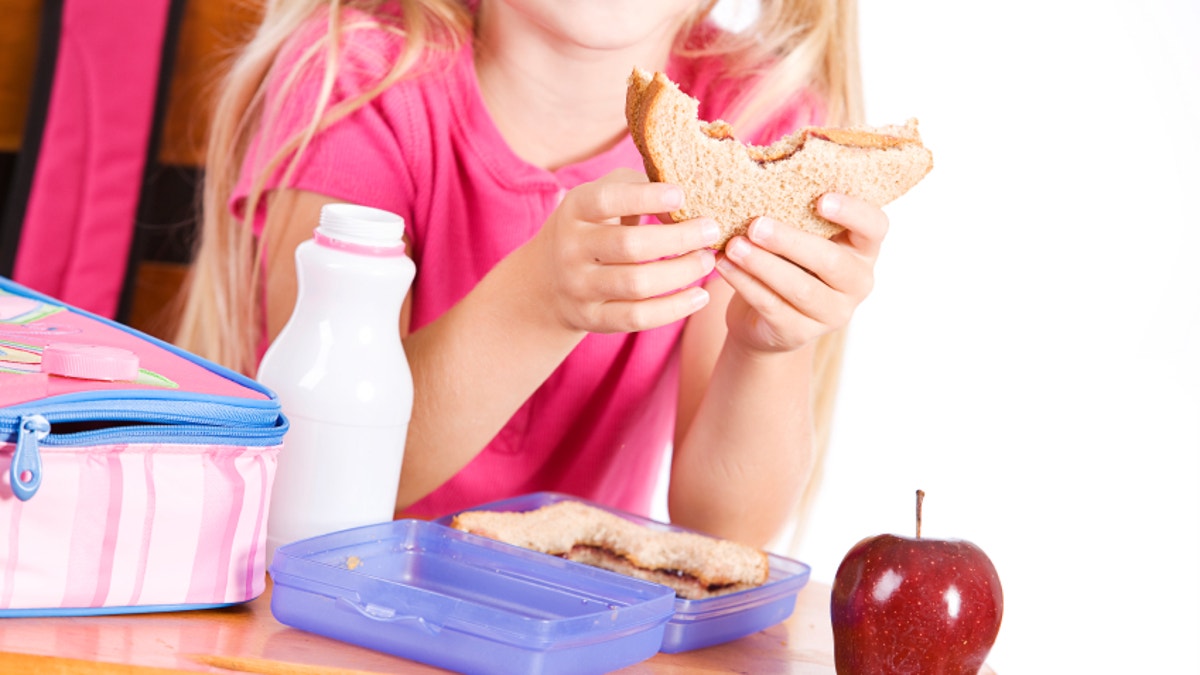
Digital Image by Sean Locke Digital Planet Design www.digitalplanetdesign.com (copyright 2008 Sean Locke Digital Planet Design)
You make sure your kids eat fruits and vegetables every day, but even the most well-intentioned moms fall short when it comes to healthy eating.
Here, find out the most common mistakes you might be making and what you can do to make sure your kid is a healthy eater.
1. Forgetting whole foods
It’s super easy to rely on packaged snacks, but processed foods are usually less nutritious and have tons of added fat, sugar, and salt. Whole foods, however, have more protein and fiber, which keep your kid satisfied longer.
“Whole foods are going to provide the biggest nutritional bang for your buck for the calories,” said Angela Lemond, a registered dietitian nutritionist and spokesperson for the Academy of Nutrition and Dietetics.
2. Not offering enough fruits and veggies
According to a recent report in the Journal of Adolescent Health, less than one in three kids eats fruits and vegetables every day. Be sure your kid is getting enough by following the USDA’s Choose My Plate image when serving meals: 1/2 fruits and vegetables, 1/4 grains, and 1/4 protein.
3. Too many artificial sweeteners
Although it’s not clear the long-term effects artificial sweeteners have on kids, it’s still best to limit them, according to Dr. Melina Jampolis, a physician, nutrition specialist and spokesperson for Zevia.
“They’re younger, they’re smaller, and their brains are developing,” she said. An alternative is Stevia, because it’s the only natural, zero-calorie sweetener, Jampolis said.
4. Drinking sugar-sweetened drinks
Pre-school aged children who drink sugar sweetened drinks are more likely to be obese, according to a recent study in the journal Pediatrics. Plus, sugar-laden drinks can be even worse than foods with sugar, because they don’t trigger a feeling of satiety, Jampolis said.
5. Thinking low-fat and non-fat are better
Foods labeled “low-fat” and “non-fat” may actually have more calories than their full-fat versions. Plus, when food manufacturers pull the fat out, they often compensate for the flavor loss by adding sugar. Be sure to read labels carefully and instead of saturated fat, include plenty of healthy fats in your child’s diet like those found in avocados, olive oil, nuts and seeds.
6. Not reading labels for sugar
Approximately 16 percent of the total calories children consume are from added sugars, a recent Centers for Disease Control and Prevention report found. And sugar can show up in unlikely foods like yogurt. Some of the sugar is lactose, but many brands add sugar and fruit, which could total an extra 14 grams alone. So opt for plain or vanilla, and add your own fresh fruit for extra fiber.
7. Cutting out carbs
You might be swearing off carbs but cutting them out of your kid’s diet can actually eliminate the key nutrients he or she needs to grow. Good choices include 100 percent whole grain pasta, rice, bread and cereal, and potatoes too.
8. Being a short order cook
Your kid is a picky eater, but if you let him or her decide what to eat, you’re essentially a short order cook. A better approach? “Give kids freedom within healthy limits,” Lemond said. Let your child choose between broccoli and carrots for dinner, and either way, you’ll be happy.
9. Disregarding meals
Kids are skipping meals and snacking more frequently, according to an Academy of Nutrition and Dietetics survey. Instead of allowing all-day grazing, make sure your child eats meals and snacks at regular times every day. “The parents are in charge of the what, when, and how of eating, and the kids are in charge of eating or not eating,” Lemond said.
10. Offering unhealthy snacks
An after-school snack is fine, but offering something that provides protein and fiber can satisfy your child’s hunger and keep his or her weight in check. In fact, a recent study in the journal Pediatrics found that when kids ate vegetables and cheese as a snack, they ate 72 percent fewer calories than those who ate potato chips.
11. Stopping seconds
“We want to encourage our children to be listening to their natural hunger and satiety clues,” Lemond said. Be sure to offer healthy choices 80 to 90 percent of the time, and let your child decide if he or she is still hungry for more. Even if your child is overweight or obese, limiting the amount of food can set your kid up for unhealthy habits in the future.
12. Giving too many or not enough treats
Whether you let your kid dip into the cookie jar a few times a day, or put limits on them for special occasions only, “you have to be careful because balance is so important when it comes to wellness,” said Lemond, who added that a treat a day is okay.
13. Using food as a reward
Giving your kid a cookie after he or she takes a tumble could lead to unhealthy food behaviors in the future. A hug, praise, or a non-food reward is a better way to handle it.
14. Eating differently than your kids do
If you snub Brussels sprouts, your kid probably won’t eat them either. Plus, eating healthy yourself will make you a healthier mom. “If you really believe in this healthy lifestyle, you’re going to also take time to feed yourself,” Lemond said.
